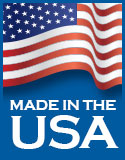
Zero liquid discharge (ZLD) is desirable to industry as well as the environment because it saves money, reduces liability and generates good will with customers and neighbors. ZLD facilities take strides to reduce the amount of water used in their manufacturing process, sometimes they use advanced wastewater treatment equipment to recycle a portion of their wastewater, and finally they use a wastewater evaporator to eliminate the balance in-house.
Zero liquid discharge systems enabling businesses to:
- Meet difficult discharge regulations
- Reduce paper work and pZero Liquid Dischargeermits
- Reduce operating cost
- In some cases, recover valuable raw materials from wastewater
- Reduce environmental exposure
The upstream benefit of a zero liquid discharge industry is that it reduces the amount of water it draw from one of these sources: rivers, city water supplies, or wells. This can be beneficial to communities that are struggling to meet water demands.
Regulations for wastewater treatment are becoming more stringent and globally it is expected that regulations will tighten in the years to come. In response to public opinion, lawmakers will toughen regulatory incentives that may make ZLD a fundamental choice for the future.
ZLD system is a holistic approach to water and wastewater treatment. If a factory can achieve zero liquid discharge, it will improve their perception in the community and eliminate the public concern about the facility’s impact on regional waterways.
The approach in every facility will be different depending on the volume they generate and the type and amount of contaminants that are in their wastewater. Some factories will use technologies like UF, RO or clarification. In all these types of technologies, there is a separation of clean water and a concentrating of contaminants into a blowdown stream or a concentrate stream. This is a good first step because the clean water can be reused, but eventually the concentrated waste stream needs to be processed. In many cases, this is where a wastewater evaporator can be a big part of the solution. A wastewater evaporator basically will boil off the water and concentrate the contaminant even further. Traditional wastewater evaporators reduce the volume of the wastewater by about 90%; obviously this is a significant reduction. The best approach is a RunDry evaporator because it eliminates 100% of the water and gives you the smallest quantity of waste for proper disposal.
As water is evaporated, contaminants often drop out of solution as a solid or an oil – it is important to consider this before selecting which evaporator you will purchase. Many evaporators have burner tubes that are immersed in the wastewater. The waste will sometimes coat these surfaces or settle below these obstructions which will make it very difficultly to clean the waste out of the evaporator. Look for an evaporator that is easy to clean.

